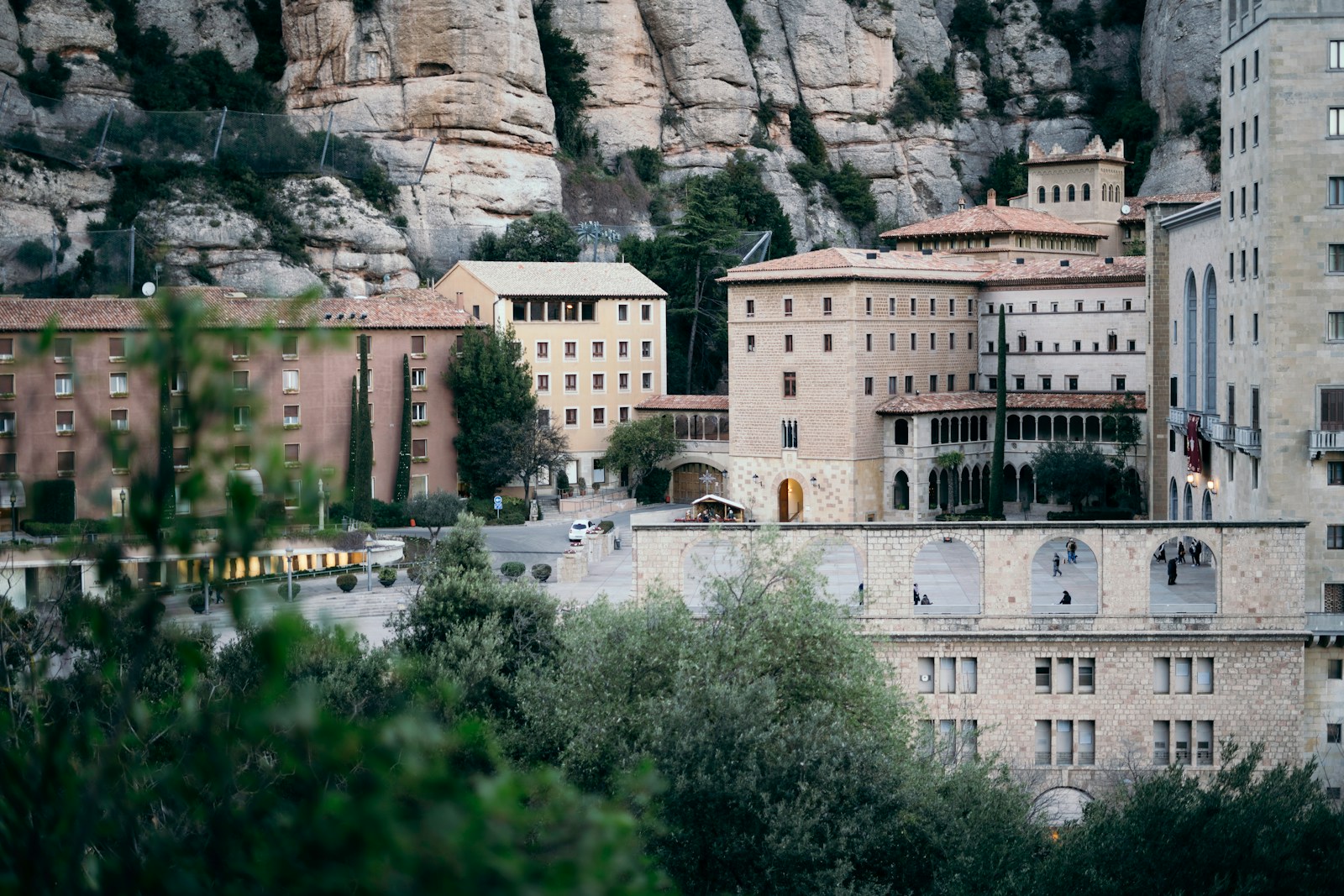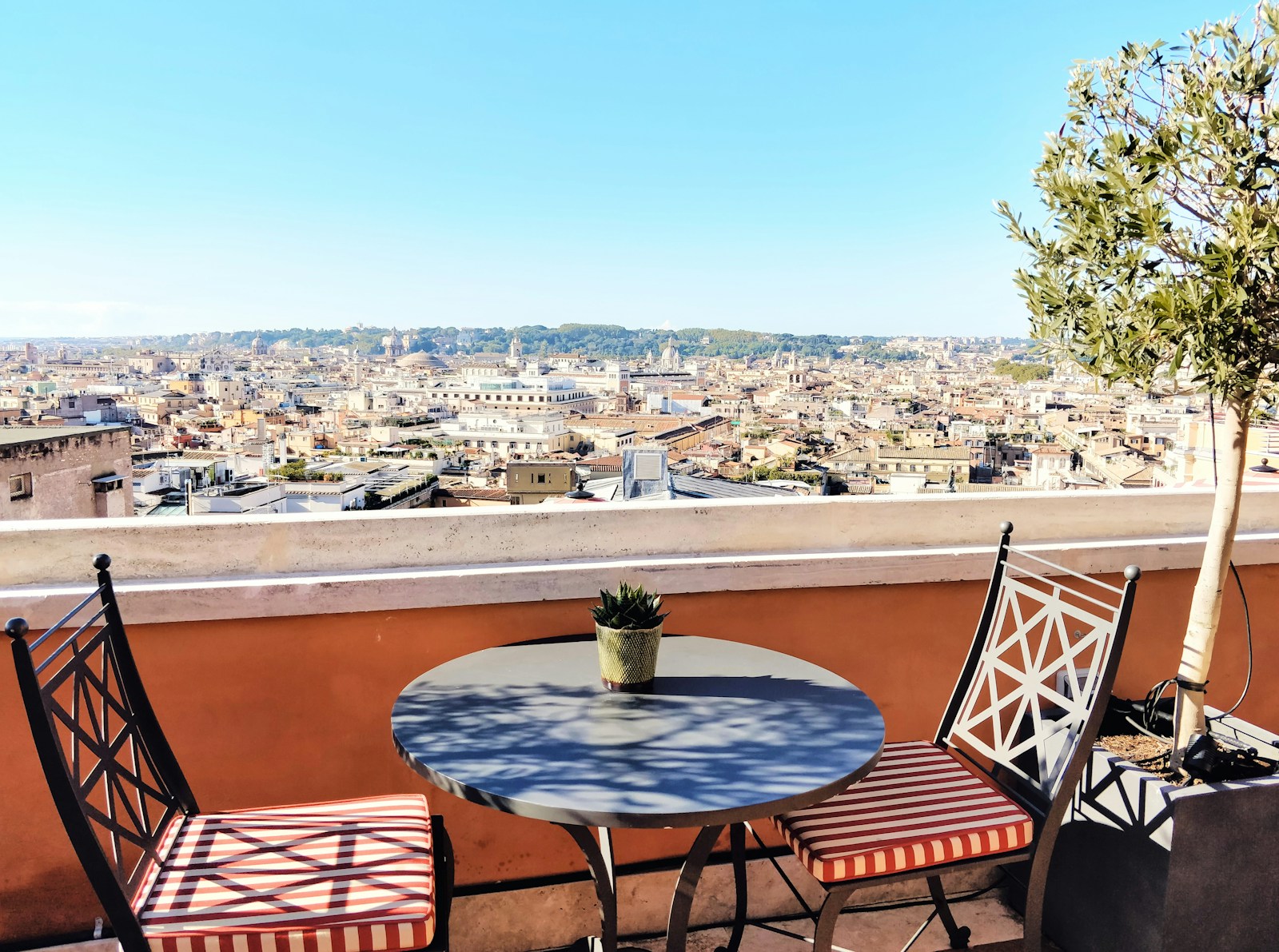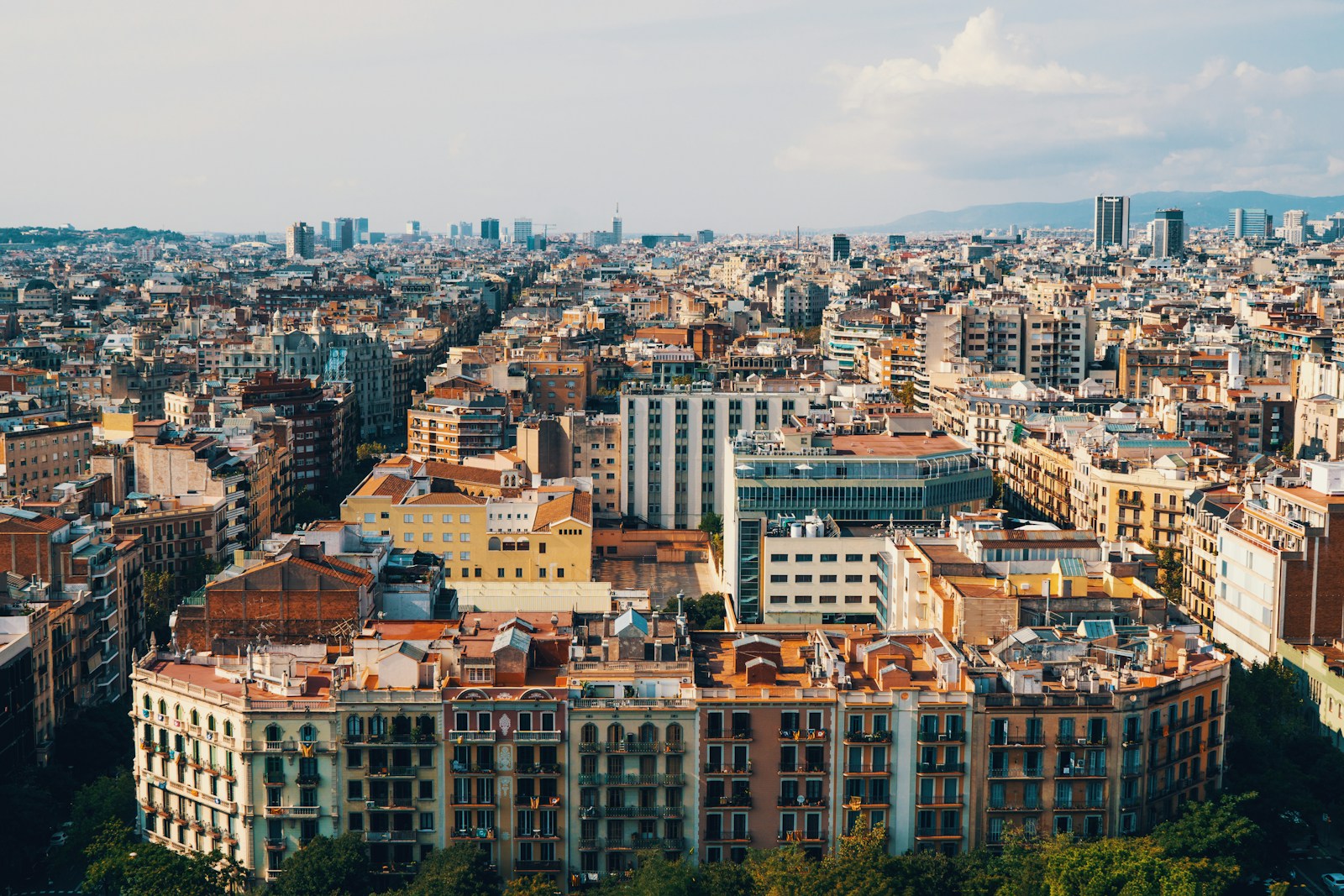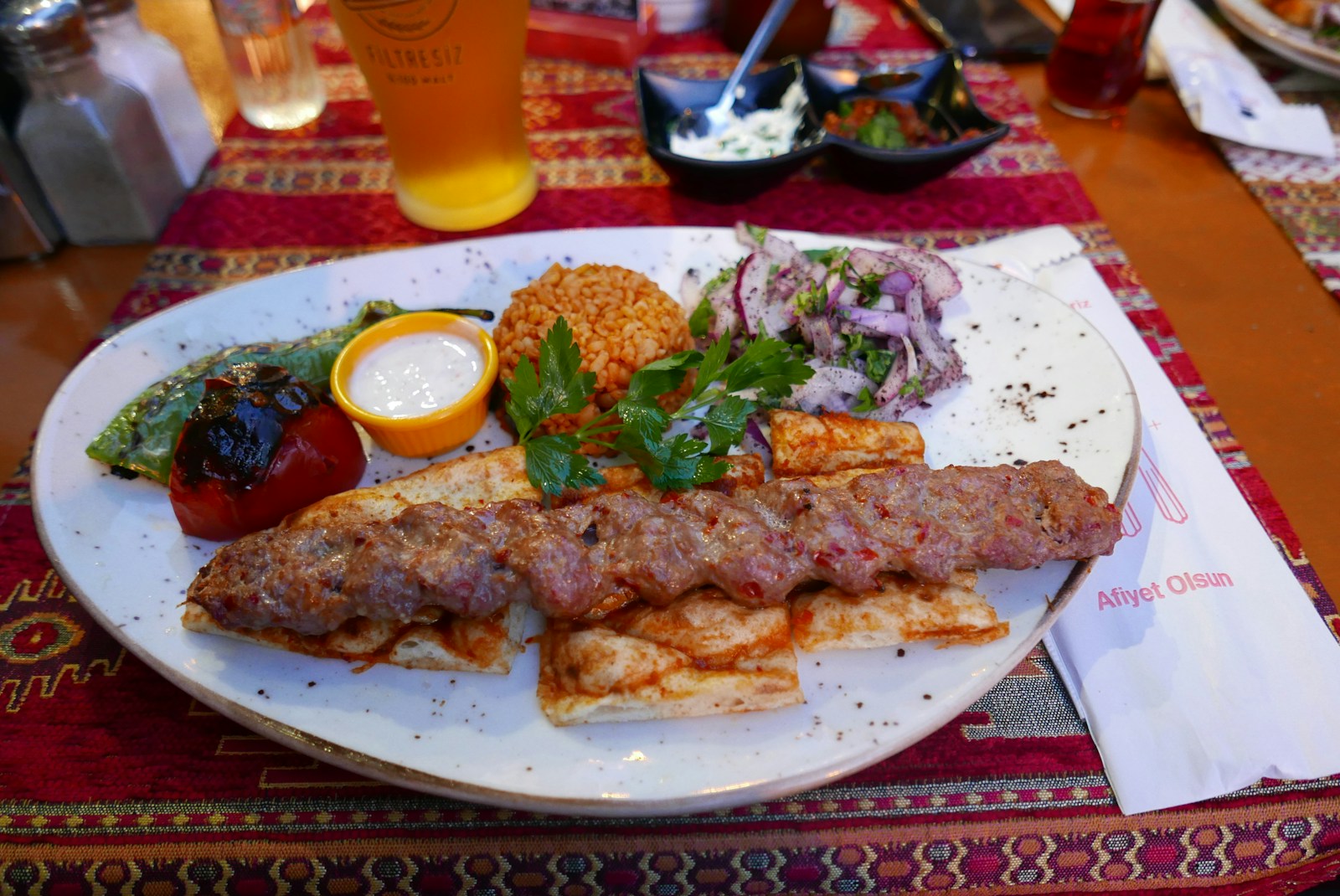The Montserrat Mountain, believed to be mystical and with religious status in Catalan tradition, remains a symbol for both atheists and Christians. Due to its peculiar form and religious importance, Montserrat awakens the interest of tourists-pilgrims from different countries. The aim of this guide is to reveal the historic background and the main attractions of this holy place for a tour and history enthusiast, as well as for a regular traveler, giving the most exciting and useful tips.
A Little History
The background to the cult of Montserrat dates back to 880 when a number of shepherds saw a bright light in the sky with beautiful music being heard. Curiosity led them to go with the rector of Olesa into the mountains, and on finding a cave, the figure of the Virgin Mary was found. Failing to shift the statue, they deemed it as a call for the construction of a chapel, namely the Chapel of the Holy Cave (Santa Cova).
Successively, throughout the centuries, various abbots took the helm in the building of a monastery of Santa Maria. The ban on the construction of new monasteries was ignored by the Benedictine monks who resided in this place, and over the years, Montserrat successfully struggled for independence from the Ripoll monastery to gain its ultimate importance in the religious arena. In the 19th century, people prayed to the Virgin of Montserrat, and the Pope, Leo XIII, declared it to be the patroness of the region of Catalonia.
Places of Interest
Monastery and Its Surroundings
This social focus of Montserrat cannot be denied, as a monastic complex, historically and now spiritually associated with the name of Santa Maria, surrounded by the beauty of the mountains. The present church is a 19th-century reconstruction of the original monastery, which is used as a shrine for the pilgrims and tourists. The Baroque basilica, with its beautiful interior, hosts the La Moreneta, a Romanesque wall hanging of the Black Virgin—a name the statue has received for the dark color of her skin due to the oxidation that the statue has been through for many centuries.
La Moreneta, also known as the Black Madonna, is one of the main symbols of the Catalan religious heritage. People go to receive her blessings, and being around her gives the whole basilica a religious feel and emphatic attitude. At Camí de l’Ave Maria, one can light a candle before the wall covered with lamps, with everyone’s prayers and wishes to be healthy and happy. This small sculpture stands directly in front of the sacristy door and is an unusually awkward figure by Apel·les Fenosa; the Angel of the Annunciation, said to have lights to the effect of UFOs due to its alien-looking appearance.
Next to the basilica, there are various additional facilities to facilitate your stay—a shop where you can buy souvenirs or some food, a restaurant, and the Hotel Abat Cisneros. It stands on a cliff, providing visitors with clear views of the Catalan countryside; there are vantage points at the base of the temple where one can get spectacular views of Catalonia’s rocky countryside. It has so many statues and other beautiful sites to make the place seem perfect for reflection and symposiums.
The Museum
In the middle of monastic buildings, there is the Montserrat Museum, which can successfully compete with Reina Sofia in Madrid. Las Lonjas hosts ancient items as well as works by Caravaggio, El Greco, and Picasso; the latter’s Museum of Monet is located nearby. Additional collections in temporary exhibitions add to the already rich collection of the museum, which is why everyone interested in art should visit the place.
There is chronologic zoning that helps to begin the exhibition with the ancient arts and end it with the present day, showing how artistic styles and world culture developed. Some of them are Baroque and Caravaggio’s work with darkness and light, El Greco’s Mannerist Spaniards with stretched figures, and Picasso’s distinction of cubism. The museum also has art pieces by successful artists originating from Catalonia, such as Ramon Casas, whose paintings depict the lives and culture of the region.
The Holy Cave
When you go for the main attractions, visit the Holy Cave, which is the source of legends known in Montserrat. The trail to the shrine starts from the Montserrat rack railway station, passing some beautiful spots; they have organized religious sculptures along this trail, which merges with the mountains. This 1.5 km walking path provides a religious experience regardless of the biblical sightseeing, as the artwork and the atmosphere of the trail are rather inspiring to a human.
When you get to the Holy Cave, there is a rather simple but touching chapel cut into an actual slope of the mountain. Despite the rather shabby appearance of the cave, its length suffices for the creation of a cult monument—an altar made in the rock of the mountain. This creates an effective and powerful atmosphere related to the spiritual nature of the objects and their creators. The small cloister with a central well, as well as the Witches’ staircase, make for a beautiful building with a serene atmosphere.
Inside the chapel, there are places where one can light a candle and observe the great work of carving merits, with high-quality artistic carvings portraying religious episodes. On the wooden altar, there is the copy of Moreneta to emphasize the continuous presence of the Virgin in this place. The layout of the chapel, the lack of any ostentatious details, and the sights around convey a sense of calmness and harmony with the mountains’ history of spiritualism.
Alternative Routes
For people who feel like they do not want to climb up the stairs to get to this holy place, a funicular railway is provided here to save a lot of energy. The funicular is situated near the Montserrat rack railway station, which allows you to get to the steepest parts of the mountain, relative to the funicular by car. This option is especially useful for tourists that have a disability, have children, or do not have the energy to explore more.
Routes to Hermitages
Since the island of Montserrat has quite a rocky surface, there are many trails to get from one point to another, passing by several hermitages that date back to the medieval ages; these trails are best for adventurous tourists. Begin your trip at the Sant Joan Funicular, found close to the rack railway and Santa Cova funicular stations. This one goes up to higher ground and connects to other tracks leading to the upper part of the mountain.
Starting from the top station, there are clear paths that lead to such hermitages as Sant Onofre and Sant Joan, located in pretty deserted places with stunning views. Today, the hermitages that were initially used to accommodate monks who decided to isolate themselves from society are also successfully functioning as beautiful resting places for contemporary tourists. The trails are guaranteed to suit different technical levels, as both hiking and climbing are represented to different degrees in the trails.
People with a full day to spend will have the opportunity to do the circular circuits around the top, which offers a closer view of nature in Montserrat. These paths provide viewpoints and also possibilities to meet the culture, flora, and fauna of the region. The second possibility is to go down the left trail starting at the top station and get to the Hermitage of Sant Miquel, passing through the zone with thickets of oak forests and peculiar rocky formations.
Hiking and Climbing
For climbers, Montserrat has different walls that might suit climbers’ needs, such as La Momia, La Prenyada, Gorra Frigia, Magdalena Superior, and many others.
The geography of the region offers defining rock formations that challenge the climbers and hikers, attracting tourists to the place. The difficult topography and rather steep rock faces provide easy hikes and fascinating gorges. To encourage new climbers or those who wish to improve their skills, there are local leading climbing guides and climbing schools where you can get lessons and equipment.
For maps and information about the most suitable routes, contact the Tourist Information Office in Collbató. Again, in Collbató, there is also a climbing gear shop called La Sargantana, where you can get basic climbing necessities. Located near Barcelona and rising up to the mountains, Montserrat’s outlook and its stunning trekking destination that explores hermitages, steep cliffs, and rough terrains can be indisputably thrilling.
Saltpeter Cave
Choosing a side of Montserrat mountain ranges located on the opposite side of the Saltpeter Cave (Cova del Salnitre), located near Collbató. With over 400 meters of passages, the exploration of this cave allows the study of geological features that define this area. Tour guides’ services are offered for visiting the intricate network of hallways, which will allow visitors to see fascinating objects such as natural rock sculptures and secret niches.
The cave visits are from Thursday to Sunday, and the explanations are in Catalan unless a reserved Spanish visit is requested. The human tour guides are always knowledgeable in the formation of the cave and the history of the cave, as well as the folklore associated with the cave. Initially, it is explained the procedural flow, and special clothing and gear for comfortable and safe work are provided.
The Saltpeter Cave has large hanging formations, also called stalactites, and the formations created below and hanging from the ceiling, known as stalagmites. The steady temperature and air isolation of the cave give people an opportunity to feel like they are in a completely different world and era. The guided tour of the cave requires additional information to be provided on all the features of the cave, which makes it informative as well as adventurous.
How to Get There
Currently, the best connection to Montserrat is Barcelona, and therefore, it would be the most suitable starting point. From the Plaça Espanya in Barcelona, one can take an R5 train going to Monistrol de Montserrat. It is gateway by train, the Montserrat Rack Railway, that climbs the mountain and deposits you right at the doorstep of the monastery. This train ride gives a breathtaking view while at the same time being very comfortable.
Whichever is one’s destination, one needs to use a private car when going to the Saltpeter Cave in Collbató. The town is actually connected to the major network via the A2 motorway, and for cars, there are parking spaces along the vicinity that lead to the entrance to the cave. It is approximately one hour drive from Barcelona through the rather colorful countryside of Catalonia.
Best Time to Visit
The best time to visit is early spring and late autumn because that is when the climate is relatively moderate, and certainly, there are fewer tourists during these periods. Summer is warm and often filled with tourists, while winter, although having fewer people, is cool and foggy sometimes.
What to Wear
It is recommended to dress casually and comfortably and wear appropriate shoes for walking because the soils of the hermitages should be explored on foot. Like most areas of exceptional height, the climate of the mountains changes quickly; therefore, it is best to layer up and protect one’s head from the sun.
Local Cuisine
A memorable experience can also be tasting the Catalan cuisine while in Montserrat. The actual restaurant of the monastery provides local meals cooked according to ancient recipes. Do not leave the area without tasting “mató,” a fresh cheese traditionally eaten with honey, a delicacy.
Language
Most people in Montserrat speak Catalan—it is the official language there—but Spanish is surely not uncommon among the residents. Although almost all the services related to the tourist industry are likely to have employees who will communicate in English, it is helpful if you can master some words and phrases in Catalan or Spanish, or at least gesture towards the attempt.
Respecting the Sacred
Note, however, that Montserrat is a religious site. It is crucial to strictly avoid wearing any form of dressing that is obscene or indecent when in the basilica and other religious grounds. Normally, the use of flash is prohibited in some areas for the conservation of the artwork and for the low-profile environment.
Organized Tours, Self-Guided Tours, and Audio-Visual Tours
For further experience and more insight into the story of Montserrat, one can book a tour guide or purchase an audio tour guide. These are helpful for background and narratives that you might not see during a do-it-yourself tour.
Wildlife and Nature
The wildlife of Montserrat is quite populated, and some of the animals found here are birds of prey such as eagles and vultures. Some of the flora includes rare endemic species adapted to the mountainous and rocky terrains. Spend time to see the awesomeness of nature and its products in this great region of the world.
Events and Festivals
Montserrat has its religious and cultural activities throughout the year to entertain visitors. Among those, one of the most important is the Day of Catalonia on April 27, a celebration of which saint? That is why their attendance can provide the visitor with a better understanding of the local culture and customs.
Suggested Itineraries
One-Day Itinerary
Morning:
- Getting to Montserrat: Take the rack railway. Start with the Monastery of Santa Maria and the basilica. Devote time to gazing at the Montserrat’s ‘Moreneta’ and to pray, lighting a candle while taking the Camí de l’Ave Maria.
Mid-Morning:
- Visit the Montserrat Museum. Marvel at the various artistic embellishments in the buildings and visit the art collections with masterpieces of Caravaggio, El Greco, Picasso, and other Catalonian artists.
Lunch:
- Have a meal at the monastery as they offer meals in a traditional Catalan style. Taste Catalonian dishes like ‘escudella,’ which is a stew, or ‘botifarra,’ which is a sausage.
Afternoon:
- Do a hiking tour to the Holy Cave, otherwise known as Santa Cova. Strengthen the spiritual experience by walking along the path decorated with sculptures admired in religion.
Late Afternoon:
- Return to the monastery. Spend some time at the viewpoints and admire the views of the surrounding landscapes before driving back to Barcelona.
Two-Day Itinerary
Day 1:
Morning:
- Get to the Montserrat monastery and the basilica. Take enough time to tour the basilica and appreciate Moreneta.
Mid-Morning:
- Take a tour of the Montserrat Museum. Spend a few minutes viewing the artworks on the walls, as they are numerous.
Lunch:
- Eat at the monastery’s restaurant. Enjoy a quality meal and feel the calmness of the place.
Afternoon:
- There are many beautiful places to visit by traveling, which you can ascend to by the funicular to the higher grounds. Trek on the paths that pass through the hermitages of Sant Onofre and Sant Joan.
Evening:
- It is suggested to check into the Hotel Abat Cisneros. Stroll in the evening around the monastery with a guide and have dinner at the hotel.
Day 2:
Morning:
- Considering the place, the first activity of the day recommended is a visit to the Holy Cave, also known as Santa Cova. If desired, one can take the funicular and lose themselves in the prayers of the chapel.
Mid-Morning:
- Visit Saltpeter Cave in Collbató as you would have seen in the novel. Take a tour of the cave system; you will be amazed by the formations found deep below the surface.
Lunch:
- Enjoy lunch in Collbató with dishes that can be tasted in a restaurant not far from the mine.
Afternoon:
- On the last day of the visit, return to Montserrat island and visit any other sight one might want to see. If the engines are roaring and you are tired of shopping, a nice trail for hiking or a climbing session would not be a bad idea.
Late Afternoon:
- The last opportunities for observing breathtaking views can be taken at the viewpoints before returning to Barcelona.
Conclusion: Experiencing Montserrat: Spirituality and Culture
Touring around Montserrat is much more than touring; it gives an individual a chance to experience the culture and historical value of Catalonia. The site and the mountain being a religious and historically associated part of the region, the tranquil environment leaves a serviceable and rewarding experience.
From the moment one lights the candle in the basilica, when walking from one hermitage to another, or when contemplating the fabulous views of Montserrat, one has the possibility of knowing the essence of Catalonia. Please bear in mind that it’s a religious site, and plan your visit accordingly, from the mode of transport to the dressing code; don’t be an intrusion, instead, embrace the history and legend of Montserrat.
Montserrat has a magical aura and stunning scenery; therefore, it can accurately be considered to embody Catalonia’s historical and, in particular, spiritual legacy. Montserrat is a place that is rich in myths and legends, starting from the caves used by the Virgin Mary, hermitages, mountain climbing paths, and much more, which makes it even more interesting. Thus, this precious hill is a combination of sights both natural and man-made, history and spiritual enlightenment, making it a place not to be missed.
This post aims at describing Montserrat’s allure and background to bring more understanding of this incredible place. Therefore, the monastery, museum, Holy Cave, and hiking make up the main attractions that provide different aspects of the mountain. When moving around the island, one should remain as calm as possible and thus feel the unique energy of Montserrat along with its history.
If one is in search of a spiritual tour, an artists’ trip, an explorer’s tour, or any other type of trip, tourists will surely have a worthwhile experience in Montserrat. Always consult and book for a visit, engage yourself with the historical side of the mountain, and be able to take with you memories for a lifetime. Montserrat is much more than that: it is an exploration of the very soul of Catalonia




